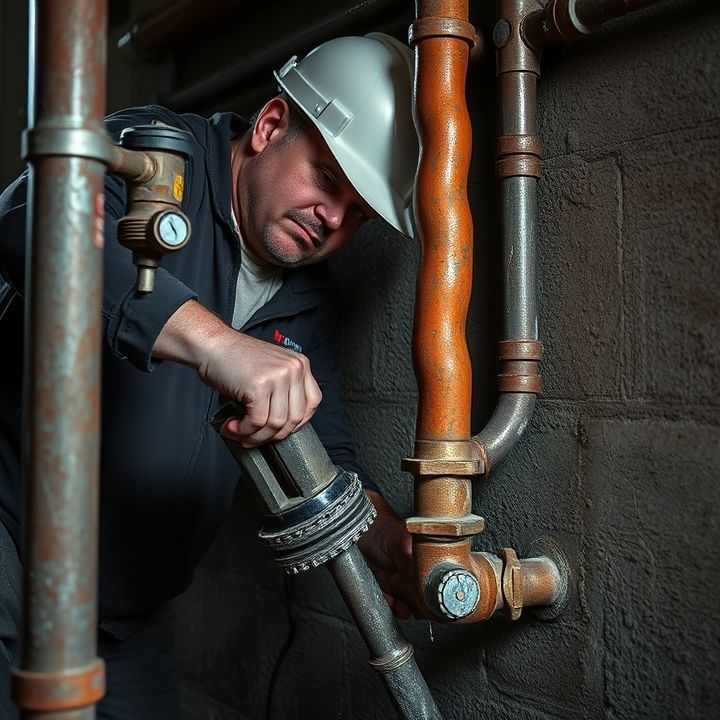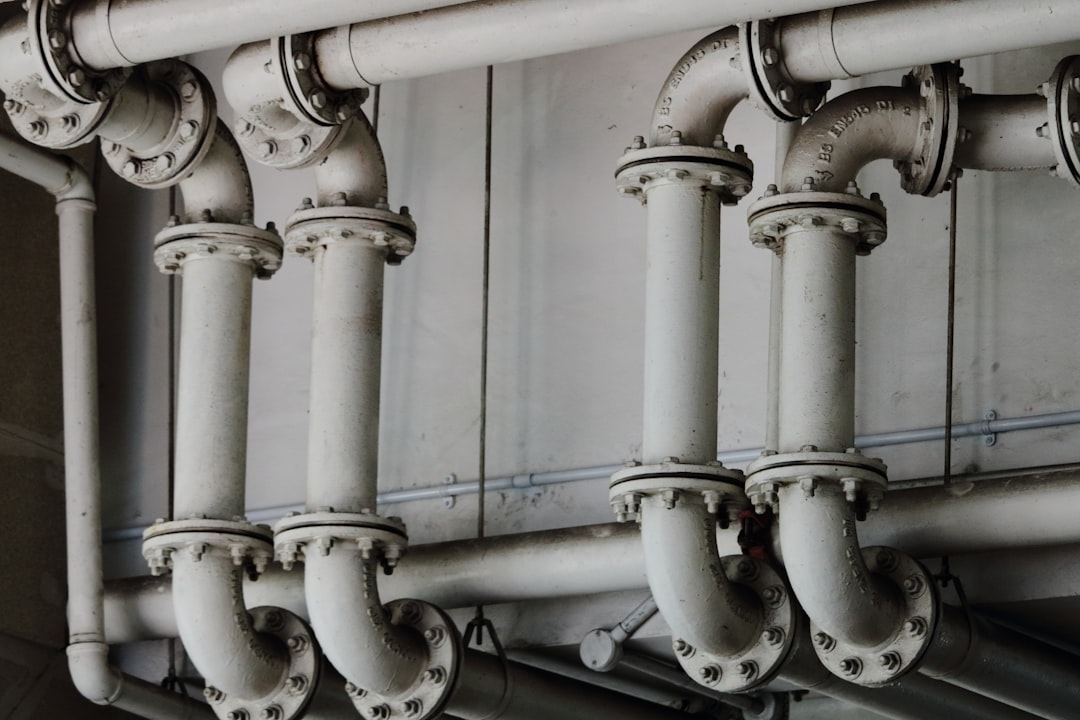Table of Contents
- Introduction
- Identifying the root causes of low water pressure
- Assessing plumbing fixtures for clogs or defects
- Inspecting plumbing valves and making necessary repairs
- Conducting plumbing drain cleaning to remove blockages
- Evaluating and replacing old or damaged plumbing pipes
- Implementing plumbing pressure-boosting solutions
- Performing plumbing leak detection and repairs
- Offering emergency plumbing services for immediate fixes
- Conclusion
- Frequently Asked Questions
Introduction
Have you ever turned on your faucet, only to be met with a pitiful trickle instead of the refreshing rush of water you expected? Low water pressure can transform your daily routines into frustrating challenges, turning simple tasks into elaborate quests.
This seemingly minor inconvenience can disrupt everything from showering and washing dishes to watering your garden. But fear not! Plumbers are the unsung heroes of the plumbing world, equipped with the skills and knowledge to tackle even the most stubborn low water pressure problems.
In this article, we will delve into the common culprits behind low water pressure and explore the intricate techniques plumbers use to diagnose and fix these issues. Get ready to unlock the secrets to restoring your water flow and bringing convenience back to your home. Whether you’re a homeowner facing this issue or simply curious about plumbing solutions, prepare to discover the world behind the tools, techniques, and expertise that keep our taps running smoothly. 
Identifying the root causes of low water pressure
Identifying the root causes of low water pressure is essential for effective plumbing solutions. Several factors can contribute to low water pressure in a home. The first step is to check if it is a widespread issue affecting the entire property or just a specific faucet or fixture. Common causes include a buildup of mineral deposits or debris in pipes that can restrict water flow. Additionally, old or corroded pipes can lead to reduced pressure, especially in older homes. Another crucial factor is the presence of leaks; even small leaks can significantly affect water pressure over time. Furthermore, the municipal water supply can also influence pressure levels; if the supply is inconsistent or if there is a main line break, this can reduce the pressure experienced in homes. Pressure regulators, if malfunctioning, may exacerbate issues as well. Understanding these potential causes allows plumbers to systematically diagnose the problem and apply appropriate fixes to restore optimal water pressure.
Assessing plumbing fixtures for clogs or defects
Assessing plumbing fixtures for clogs or defects is a critical step in diagnosing low water pressure issues. Start by examining each fixture, such as faucets, showerheads, and toilets. Check for any visible signs of mineral buildup or debris, which can impede water flow. Remove aerators from faucets and clean them thoroughly to ensure they are free from obstructions. Similarly, inspect showerheads for scaling or blockages that might restrict water flow.
Next, look for leaks around fixtures, as these can significantly affect water pressure. Confirm that all connections are tight, and look for any signs of water pooling. Additionally, examine the plumbing system as a whole, including supply lines and valves, to detect potential restrictions or defects.
If the fixtures and connections appear to be in good condition, the issue may lie within the plumbing system itself, warranting a more in-depth inspection of the pipes to ensure they are not corroded, blocked, or damaged. Proper assessment of fixtures is essential in identifying the root cause of water pressure problems.
Inspecting plumbing valves and making necessary repairs
Inspecting plumbing valves is a crucial step in addressing low water pressure issues. Valves control the flow of water throughout the plumbing system, and if they are damaged or malfunctioning, they can restrict water flow significantly. The first step in this process involves visually inspecting the valves for any signs of leaks, corrosion, or physical damage. This includes checking both the main shut-off valve and any additional valves located throughout the home.
If a valve appears to be faulty, a plumber will typically turn off the water supply before proceeding with repairs. They may need to replace washer seals, O-rings, or even the entire valve if it is beyond repair. Additionally, it’s important to ensure that all valves are fully open, as partially closed valves can also contribute to low water pressure.
After making necessary repairs or replacements, the plumber will test the system to ensure that water pressure has improved. Regular inspections and maintenance of plumbing valves can help prevent future pressure issues and extend the lifespan of the plumbing system.
Conducting plumbing drain cleaning to remove blockages
Conducting plumbing drain cleaning is essential for maintaining optimal water flow and preventing blockages. Over time, debris such as grease, food particles, hair, and soap scum can accumulate within the pipes, leading to reduced water pressure and potential backups. One effective method for cleaning drains is the use of a plumbing snake, a flexible tool that can reach deep into pipes to dislodge obstructions. Another popular option is hydro-jetting, which involves using high-pressure water jets to clear stubborn blockages and clean the pipe walls.
Additionally, regular maintenance is key to avoiding significant plumbing issues. Homeowners should consider scheduling annual drain cleaning services to proactively address any buildup before it becomes problematic. Chemical drain cleaners are available, but caution is advised as they can be harsh on pipes and the environment. Instead, natural alternatives like baking soda and vinegar can provide a safer option for minor clogs. By understanding the importance of drain cleaning, homeowners can ensure their plumbing system operates efficiently and prolong its lifespan.
Evaluating and replacing old or damaged plumbing pipes
When dealing with low water pressure, one of the first steps is evaluating the plumbing system for old or damaged pipes. Over time, pipes can corrode, develop leaks, or become clogged, significantly affecting water flow.
A thorough inspection should be conducted to identify any visible signs of damage such as rust, discoloration, or leaks. If pipes are made from outdated materials like galvanized steel, they may need to be replaced as they are prone to corrosion and mineral buildup. Additionally, using specialized tools like pressure gauges can help assess the actual water pressure in the system, providing insight into potential issues.
If damaged sections of piping are found, replacing them is essential. New piping options such as PEX or PVC are often recommended due to their durability and resistance to corrosion. Proper installation is crucial to ensure that the new pipes are connected correctly and maintain optimal water pressure. Regular maintenance should be prioritized to prevent low water pressure issues from recurring, making sure that plumbing systems function efficiently.
Implementing plumbing pressure-boosting solutions
Implementing plumbing pressure-boosting solutions can significantly improve low water pressure in residential and commercial settings. One effective method is the installation of a pressure-boosting pump, which can enhance the water flow from the main supply line. These pumps work by increasing the water pressure as it enters the plumbing system, providing a consistent and stronger flow throughout the property.
Another solution is the use of a pressure regulator, which helps to stabilize the pressure and prevents fluctuations that can lead to inadequate water flow. Additionally, upgrading existing pipe systems to larger diameters can alleviate restrictions that cause low pressure.
Regular maintenance of plumbing fixtures, such as showerheads and faucets, is also essential, as mineral buildup can restrict flow. In cases where the municipal water supply is the issue, advocating for infrastructure improvements within the community may be necessary.
Performing plumbing leak detection and repairs
Performing plumbing leak detection and repairs is crucial for maintaining the integrity of any plumbing system. The first step in this process involves identifying the source of the leak, which can often be tricky. Common signs of a leak include damp spots on walls or ceilings, increased water bills, and the sound of running water when no fixtures are in use.
Plumbers typically use specialized tools, such as acoustic leak detectors and infrared cameras, to locate leaks without causing unnecessary damage. Once the leak is located, the repair process can begin. This may involve replacing damaged pipes, sealing joints, or tightening fittings.
In some cases, particularly with older plumbing systems, it may be more effective to replace sections of piping entirely rather than attempting to repair them. Regular maintenance and prompt repairs help prevent more extensive damage and costly repairs down the line, ensuring a functional and efficient plumbing system.
Offering emergency plumbing services for immediate fixes
Offering emergency plumbing services is crucial for addressing immediate issues such as low water pressure, burst pipes, or clogged drains. Plumbing emergencies can arise at any time, often during inconvenient hours, leaving homeowners and businesses at a loss. Quick response is essential to mitigate damage and restore normal functionality. Emergency plumbers are trained to handle a variety of urgent situations efficiently. They arrive with the necessary tools and expertise to diagnose and fix problems promptly.
These services not only prioritize rapid response but also provide peace of mind for clients. Knowing that help is just a call away allows individuals to feel secure in the face of unexpected plumbing issues. Many emergency plumbers also offer 24/7 services, which means assistance is available during evenings, weekends, and holidays. This level of accessibility ensures that severe plumbing problems can be addressed before they escalate into more significant concerns. Ultimately, emergency plumbing services play a vital role in maintaining the integrity of plumbing systems and ensuring the comfort of occupants.
Conclusion
In conclusion, addressing low water pressure issues is essential for ensuring a comfortable and efficient plumbing system in your home. From identifying the root causes to implementing effective solutions, the expertise of professional plumbers is invaluable. They can assess your plumbing fixtures, diagnose leaks, and provide the necessary repairs to restore optimal water pressure. Whether the problem lies in clogged pipes, faulty valves, or damaged fixtures, timely intervention can prevent more extensive damages and costly repairs in the long run. Don’t let low water pressure disrupt your daily routines; take action today. For reliable plumbing assistance, call 573-555-2121 now and enjoy the peace of mind that comes with expert support for all your plumbing needs.
